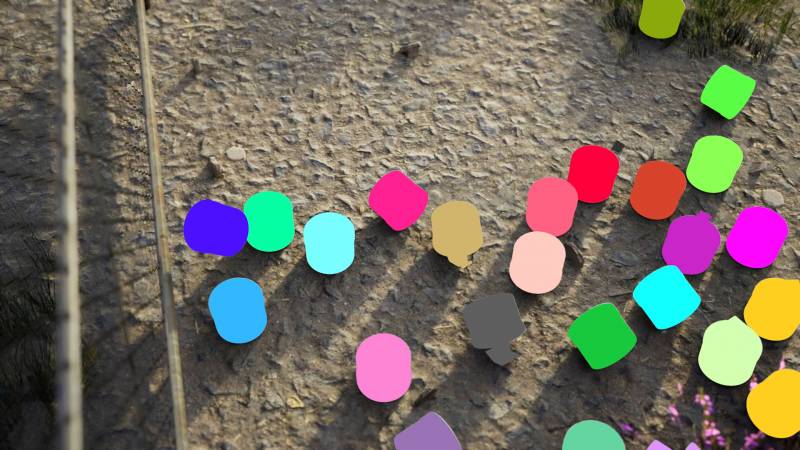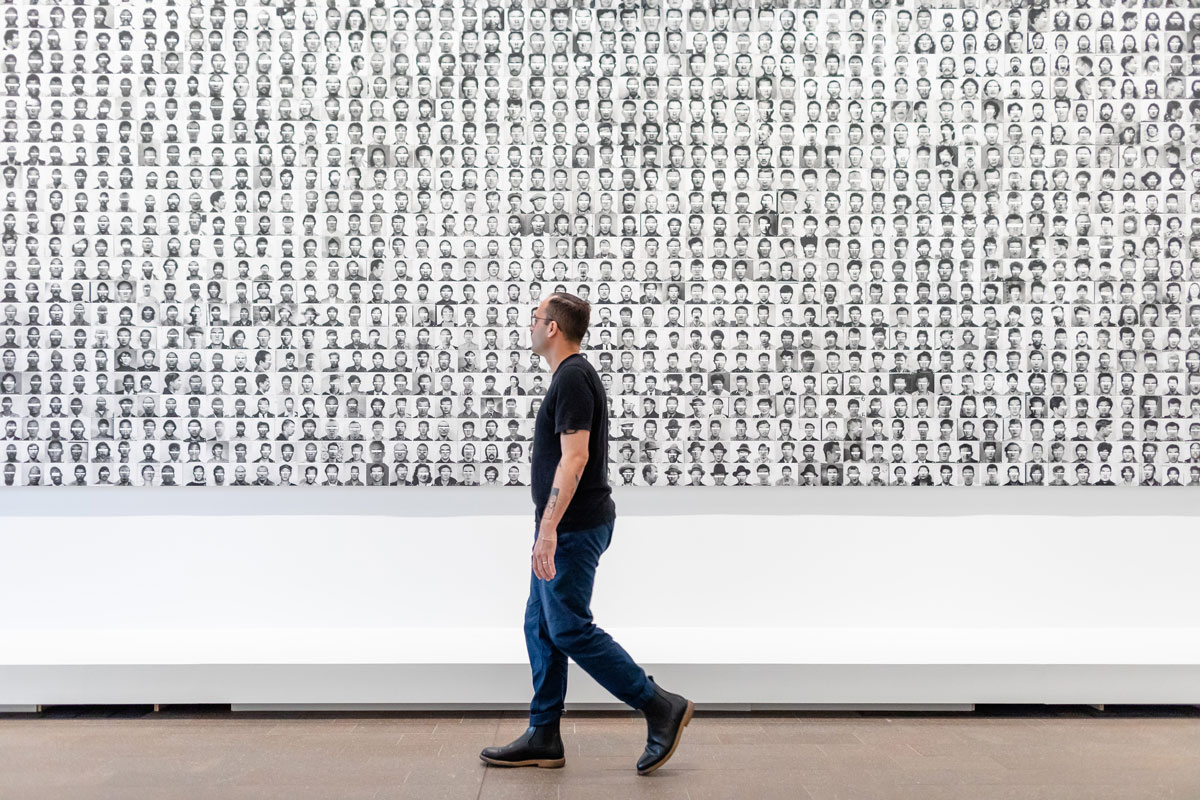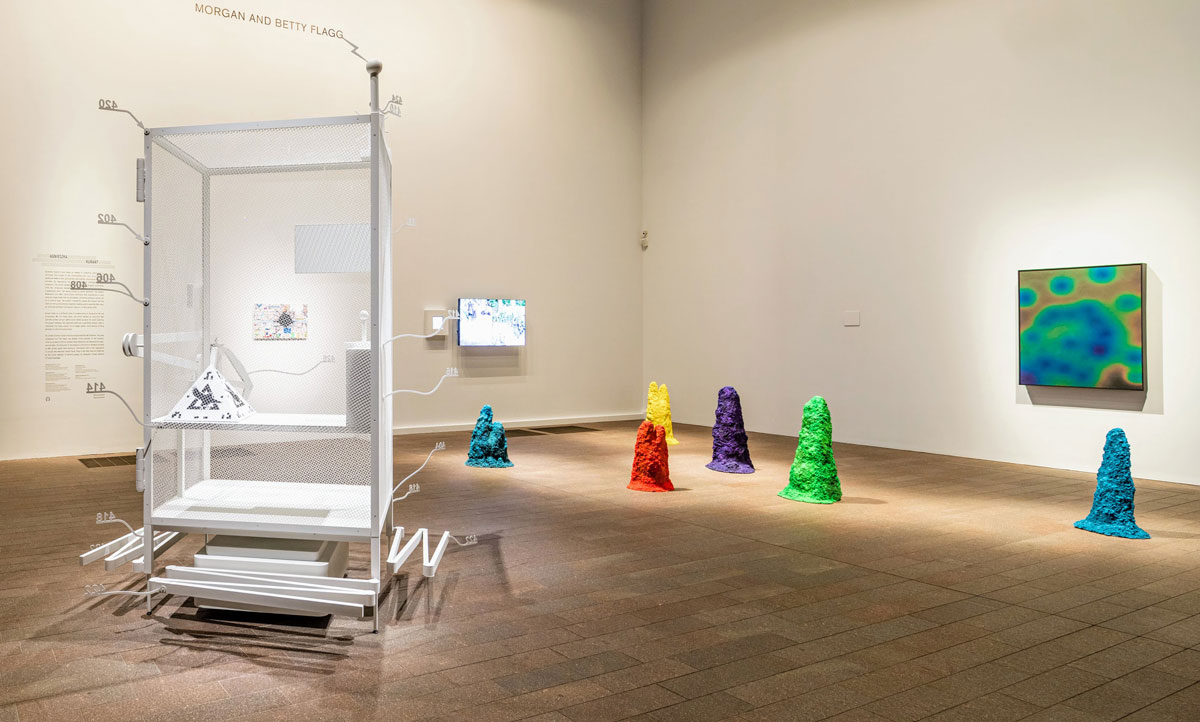The appearance of one’s doppelgänger usually presages disaster. Today, a shadow version of oneself exists constantly alongside our flesh-and-bone selves, for the most part concealed under the surface of our smartphones, in the ebb and flow of data behind our screens. These “statistical alter egos,” as de Young contemporary art curator Claudia Schmuckli calls them, are part of the modern condition—at least for anyone who engages with the networked world.
Instead of shying away from this uncomfortable truth, the artists of Uncanny Valley, Schmuckli’s first group exhibition at the de Young, meet these doppelgängers head on, mining and manipulating that data to confront audiences with their digital lives, and the real-world implications of all that information.
Uncanny Valley is billed as the “first major exhibition in the U.S. to explore the relationship between humans and intelligent machines through an artistic lens,” which sounds like it could be a show of unwieldy and intangible technology. It does, however, hew fairly close to the standard exhibition format, just with slightly more interactive features. Dealing in such nebulous, digital stuff, Uncanny Valley’s strongest moments turn those themes into room-sized installations, as happens in Zach Blas’ The Doors, Lynn Hershman Leeson’s Shadow Stalker and Christopher Kulendran Thomas’ Being Human.
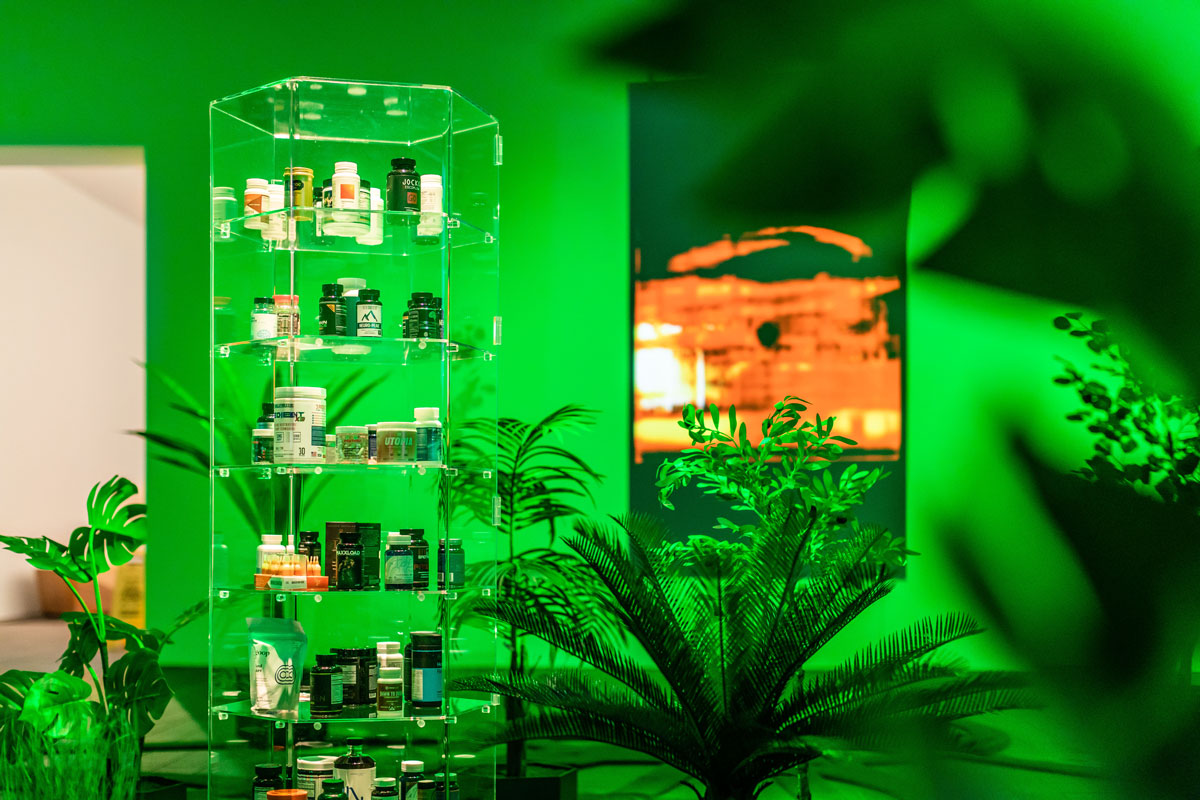
The exhibition opens with Blas’ green-tinged “mystical corporate garden,” organized around the sacred geometry of Metatron’s cube in a nod to the Bay Area’s past and present relationship to psychedelia. At the room’s center, a glass case displays readily available nootropics (so-called smart drugs), popular with a Silicon Valley set interested in optimizing everything, including their own minds. On hanging screens, video projections trained on various neural networks (Fillmore-esque posters, Jim Morrison’s poetry, lizard skin) create a frenetic ambiance, the textbook cacophony of a bad trip.
While Blas’ LSD-inspired “garden” asks questions like “Who gets to have a vision of the future today?” other projects supply an onslaught of unsettling information we didn’t necessarily know to ask after. Soliciting visitors’ email addresses, Hershman Leeson’s Shadow Stalker broadcasts what personal data can be gleaned from an internet search of that email, yielding current and former addresses, dates of birth, phone numbers and even, sometimes, credit scores. (Schmuckli assured me the museum isn’t keeping people’s email addresses on file, so at least there’s that.)
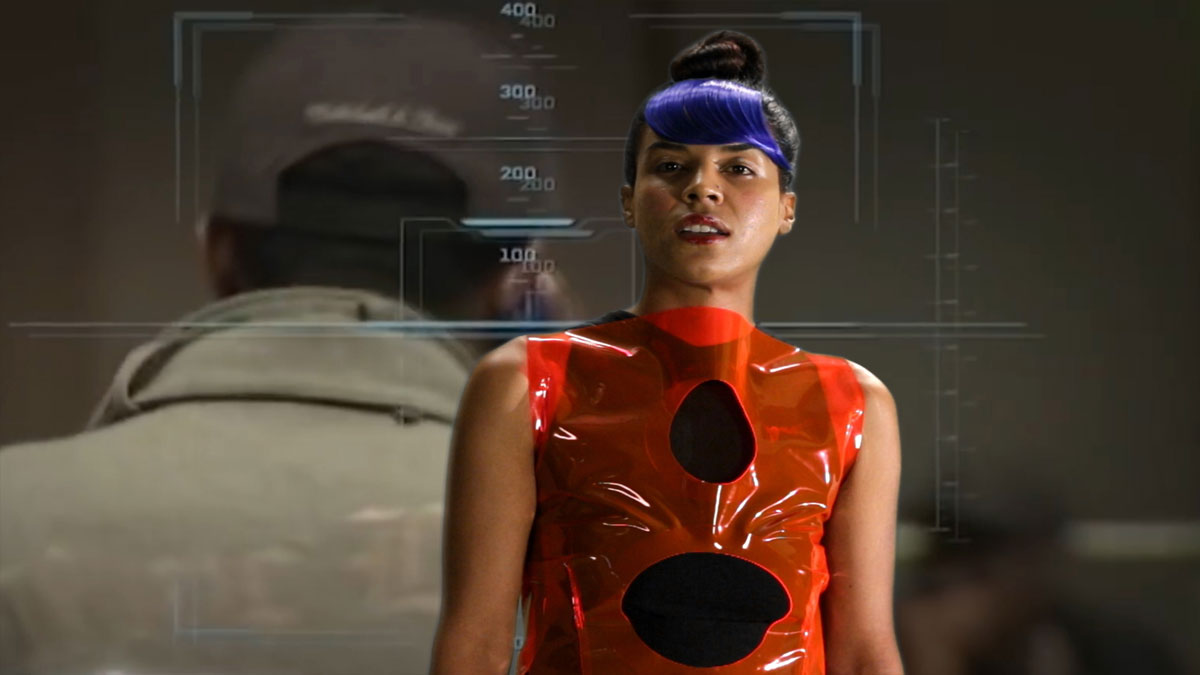
Hershman Leeson further implicates her audience (their physical and “digital” shadows become part of a projected map) by linking this invasive search to the reality of predictive policing, which uses data about past arrests to identify “high-risk areas” and determine heightened surveillance of those spaces. The feedback loop is dizzying.
